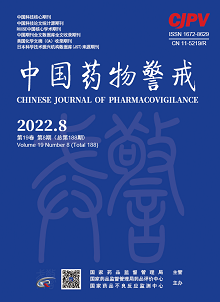|
|
Biodistribution study of CAR-T cells in non-bearing-tumor and tumor-bearing severe immunodeficient mice
HOU Tiantian, LI Xuejiao, SUN Lei, QIN Chao, ZHAO Jing, HUO Yan, WANG Yu, GENG Xingchao, HUANG Ying
2022, 19(8):
823-827.
DOI: 10.19803/j.1672-8629.2022.08.03
Objective To investigate the proliferation, distribution and persistance of chimeric antigen receptor T(CAR-T)cells in non-bearing-tumor and tumor-bearing severe immunodeficient mice. Methods Non-bearing-tumor mice: The mice received intravenous infusions of CAR-T-FLuc cells that were transduced with firefly luciferase. CAR-T-FLuc cells were monitored by in vivo imaging system at different time points. The animals were sacrificed at 3 hours, 2 days, 7 days, 14 days, 28 days, 56 days, 84 days respectively. Blood, heart, liver, spleen, lung, kidney, brain, testis, epididymis, uterus, ovary, stomach, duodenum, bone marrow, fat, skeletal muscle were taken successively. By QPCR, the distribution of CAR-T-FLuc cells were detected in these apparatuses and peripheral blood. Tumor-bearing mice: A tumor model was established, mice were injected with Raji cells via the tail vein, and then the mice were intravenous injected with CAR-T-FLuc. The expression of CAR-T-FLuc cells in vivo and at different time points in various tissues were investigated by the same detection method as in non-tumor-bearing mice. Results In non-bearing-tumor mice: CAR-T-FLuc cells were mainly distributed in the lung and spleen, followed by blood. At 3 hours after administration, the cells were mainly distributed in the lung and then transferred to other organs. The expression of CAR of each organ was higher at 2 days, 14 days and 56 days. And CAR expression was close to zero at 84 days. In tumor-bearing mice: CAR-T-FLuc cells were mainly distributed in the spleen, followed by the lung and blood. CAR expression was detected in peripheral blood 5 minutes after administration, and 1 day, 6 days and 27 days were the peak time of CAR expression. In most tissues, CAR-T cells were detected 3 hours after drug administration, with the highest content in the lungs, followed by a downward trend, and the lowest at 15 days. After that, the CAR-T cell content of each tissue continued to rise, reaching a peak at 55 days. Conclusion CAR-T-FLuc cells are mainly distributed in the spleen, lung and blood in non-tumor-bearing mice and tumor-bearing mice, but the distribution trends in both animals are different. The amplification level in tumor-bearing mice was higher than that in non-tumor-bearing mice.
References |
Related Articles |
Metrics
|

